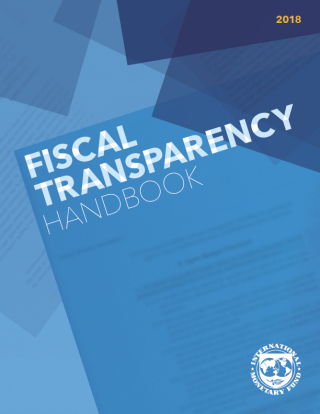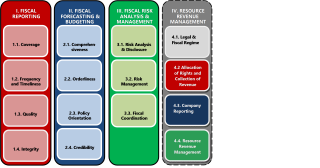
Posted by Richard Allen and Sailendra Pattanayak[1]
The 2018 Fiscal Transparency Handbook was published on April 21, 2018. The Handbook explains the principles and practices set out in the 2014 Fiscal Transparency Code, which was initially launched in the late 1990s and revised in 2014. The Code is the most widely recognized international standard for the disclosure of information about public finances.
Fiscal transparency refers to the information available to the public about the government’s fiscal policy-making process. It focuses on the clarity, reliability, frequency, timeliness, and relevance of public fiscal reports, and the openness of such information. The 2014 Code comprises a set of principles built around four pillars. Each pillar contains three to four dimensions, and each dimension, two to four principles. Each principle provides three levels of practice – basic practice, good practice and advanced practice – taking account of different levels of countries’ institutional capacity.
- Pillar I covers fiscal reporting. It requires the availability of relevant, comprehensive, timely, and reliable information on the government’s fiscal operations and performance.
- Pillar II covers fiscal forecasting and budgeting. It requires the provision of a clear statement of the government’s budgetary objectives and policy intentions, together with comprehensive, timely, and credible projections of the evolution of public finances.
- Pillar III covers fiscal risk analysis and management. It requires that risks to the public finances are disclosed, analyzed, and managed, and that fiscal decision-making across the public sector is effectively coordinated.
- Pillar IV covers resource revenue management. It requires the provision of a transparent framework for the ownership, contracting, taxation, and use of natural resource endowments.
- The Fiscal Transparency Evaluation (FTE) is the IMF’s main diagnostic tool for a comprehensive assessment of country practices against the transparency standards set by the Code.
Four Pillars of the 2014 Fiscal Transparency Code
(Click on the image for a better resolution)

The present Handbook covers Pillars I to III of the Code. A subsequent version, planned for release in 2019, will incorporate the Pillar IV on natural resource revenue management.
The Handbook provides detailed guidance – illustrated by many examples from countries around the globe – to a range of stakeholders on the implementation of the Code. These stakeholders include governments with an interest in promoting fiscal transparency, national oversight and accountability organizations, such as legislatures, supreme audit institutions, parliamentary budget offices, national statistics agencies, and independent fiscal agencies; international organizations; investors; international rating agencies; academia and researchers studying public finance and fiscal transparency; and others – in the public or private sectors – who have an interest in promoting transparency.
As a companion to the Code and FTEs, the Handbook will help countries strengthen their economic institutions in the area of public financial management.
Christine Lagarde, Managing Director of the IMF, has noted how the Code and the Handbook can help “to push the transparency agenda and close the trust gap between citizens and their governments.”
You can download the Fiscal Transparency Handbook here
[1] Richard Allen is a Visiting Scholar in the IMF’s Fiscal Affairs Department (FAD), and co-editor of the PFM Blog; Sailendra Pattanayak is Deputy Division Chief in the FAD’s Public Financial Management Division II.
Note: The posts on the IMF PFM Blog should not be reported as representing the views of the IMF. The views expressed are those of the authors and do not necessarily represent those of the IMF or IMF policy.







